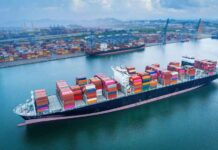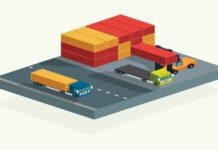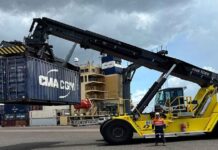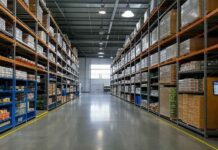Enterprises have a responsibility to develop supply chains that are robust and capable of ensuring continuous operations regardless of the disruptions that are shaking the market.
At various points in time throughout history, global supply networks have been disrupted by a variety of factors, including geopolitical conflicts, natural catastrophes, and population upheavals. The effects, on the other hand, have been mostly local and only transitory. During the Covid-19 outbreak, the vulnerabilities that existed in global supply chains were brought to light for the very first time to such a significant degree. When businesses came to the realization that their supply chains needed to be robust enough to outrun any interruptions, this was a turning point in their operations. It is the sort that would guarantee smooth operations regardless of the turmoil that is occurring in the market.
Another factor that is exerting pressure on businesses to develop supply chains that are more robust and flexible is the shifting expectations and values of consumers.
A significant change in customer expectations has been brought about as a result of the cumulative impact of the digital economy, social media, and generations that are proficient in digital technology, in particular millennials and Generation Z respectively. Customers of today are more discriminating than ever before, and they have a strong need for speed. They want to be able to monitor their purchases in real time. Any kind of disturbance in the supply chain, no matter how little, might cause them to leave.
Consumers are also becoming more environmentally concerned, and they are embracing lifestyles and goods that are more ecologically friendly. Over the course of this time, governments and regulatory agencies have implemented strict legislation. As an example, the reporting of Scope 3 emissions that are produced outside the boundaries of a company is now a legal obligation in several nations. The demand that is being put on businesses to monitor and report their sourcing processes, manufacturing, distribution, and other parts of their supply chain to various stakeholders, such as customers and investors, is growing.
All of this has made it more vital than ever before to prioritize operations that are sustainable throughout the supply chain.
Resilience, agility, and sustainability are becoming more important, and as a result, supply chain operations need to be prepared for the future.
For supply chain operations to be prepared for the future, it is essential to concentrate on the following three important tenets:
Having a digital foundation: When it comes to accelerating processes and adjusting to disruptions, digital transformation and the integration of technology with supply chain operations play a vital role. Creating supply networks that are more dynamic and responsive may be accomplished via the use of new technologies such as generative artificial intelligence (GenAI), which can provide supply chain experts real-time advice on inventory, demand, risks, and future needs. This makes it easier for firms to avoid supply bottlenecks and improves their ability to react quickly to changing market conditions. Currently, businesses are making use of technology such as digital twins in order to get comprehensive insights into their operations, which in turn enables them to do predictive maintenance and optimize their supply chains. In addition, many are working to minimize carbon and Scope 3 emissions by using digital solutions and platforms that are now available on the market. These systems provide a centralized system that allows suppliers to submit the data that pertains to their emissions. The information may then be readily included into the sustainability reporting of a firm, or it can assist the organization in making choices about the procurement of materials from only those suppliers who adhere to sustainable standards.
Driven by data: High-quality data continues to be one of the primary assets that are used to simplify and improve the operations that occur across the whole supply chain. In order to evaluate huge quantities of data from a variety of sources and utilize the insights gained to drive optimal sourcing choices throughout the supply value chain, professionals working in the supply chain may make use of technologies that are driven by artificial intelligence (AI) and general artificial intelligence (GenAI). In order to fulfill the ever-increasing demands of customers, this may help decrease costs and guarantee that products are available. The analysis of data is an essential component of inventory management, and the most recent developments in technology, such as GenAI, make it possible to conduct more precise analyses of historical data as well as other relevant databases. The result of this is that businesses are able to more accurately forecast the demand from customers and adjust their production levels accordingly.
Operating models that are linked: A supply chain that is prepared for the future will be backed by an infrastructure that is highly digital and very connected. Because of this connectedness, all of the stakeholders in the supply chain will be able to work together in real time to optimize the routes that are used to move items, hence reducing delays and lowering expenses incurred. Imagine a system in which suppliers, manufacturers, and logistics providers continuously share data, making instantaneous decisions about, for example, the best shipping routes. This would be similar to how Google Maps assists drivers in navigating traffic in real time, providing updates on the fastest routes and avoiding congestion. In order to realize this vision, it will be essential to include artificial intelligence, sensors connected to the internet of things (IoT), real-time analytics, and digital platforms. To guarantee that the most effective transportation and logistics systems are constantly in use, all of the parties involved will be able to access real-time data in a seamless manner and collaborate with one another.
Emphasis on innovation
Utilize the appropriate combination of technology, data, and guiding principles in order to innovate for the future.
There have been turbulent moments for global supply chain operations, and they continue to be susceptible to geopolitical and other upsets for various reasons. However, companies have the ability to innovate and construct supply chains of the future that are robust, efficient, flexible, and sustainable. These supply chains will be able to resist headwinds and stay up with customers if they are equipped with the appropriate combination of technology, data, and leadership principles.

























